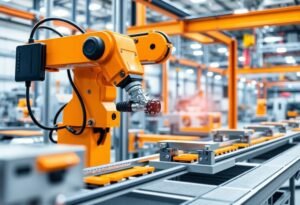3D printing is rapidly changing the landscape of innovation, especially in the realm of sustainable packaging. As environmental concerns grow, this technology offers revolutionary solutions that minimize waste and promote eco-friendliness in manufacturing processes.
The Shift Towards Sustainable Packaging Solutions
The world is witnessing a significant shift toward sustainable packaging, driven by increasing consumer awareness and regulatory pressures. Traditional packaging methods generate substantial waste and rely heavily on fossil fuels. In contrast, 3D printing technology enables companies to create customized, on-demand packaging with minimal materials. By utilizing biodegradable or recyclable materials, businesses can significantly reduce their environmental footprint while also catering to specific product needs. This approach not only conserves resources but also promotes a circular economy, aligning with global sustainability goals.
How 3D Printing Works in Packaging Production
3D printing, or additive manufacturing, involves layering materials to create products from scratch. In the context of packaging, companies can design intricate shapes and structures that traditional methods cannot achieve. This technology often utilizes materials such as plant-based polymers and recycled plastics, which contribute to reducing waste. Moreover, by allowing for rapid prototyping, businesses can test packaging designs and iterate quickly, minimizing costs and ensuring that their packaging meets both consumer desire and environmental responsibility.
The Economic Benefits of 3D Printed Packaging
Investing in 3D printed packaging can yield significant cost savings for businesses. With the ability to produce packaging on demand, companies can reduce inventory storage needs and associated costs. Furthermore, the reduced material waste from precise printing techniques translates into lower material expenditures. This innovation fosters a competitive advantage in the market—brands that prioritize sustainability can enhance their reputation and attract environmentally conscious consumers, ultimately leading to increased sales and customer loyalty.
Case Studies of Successful Implementation
Several companies have successfully integrated 3D printing into their packaging production. For instance, a leading food brand utilized 3D printing technology to develop tailored packaging that preserved freshness and minimized waste. Another case involved a cosmetics company that created aesthetically pleasing, eco-friendly containers through additive manufacturing. These success stories highlight the potential for 3D printing to revolutionize how products are packaged and delivered, showcasing the technology’s versatility and effectiveness in different industries.
Future Trends in 3D Printing and Packaging
The future of packaging will likely see continued advancements in 3D printing technologies. Emerging materials, such as bio-based plastics and multi-material printing, are set to enhance the sustainability of packaging solutions further. The integration of artificial intelligence in design processes could streamline efficiency, allowing for more optimized and eco-friendly packaging solutions. As consumer expectations evolve, businesses will need to adapt, making 3D printing a key player in the future of sustainable packaging.
Conclusion: Embracing Sustainable Innovation
3D printing is significantly impacting the quest for sustainability in packaging. As more companies recognize the benefits—economic, environmental, and aesthetic—of this technology, it will undoubtedly play an increasingly prominent role in the packaging industry. By embracing innovative solutions like 3D printing, businesses can lead the way toward a more sustainable future while also meeting market demands.
Disclaimer: The content provided is for informational purposes only and does not constitute professional advice.





















